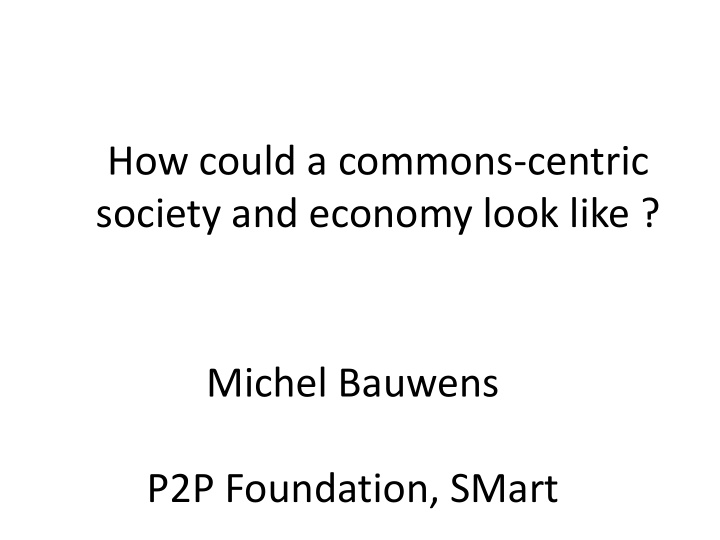



How could a commons-centric society and economy look like ? Michel Bauwens P2P Foundation, SMart
The Place of the Commons in Human Evolution ● One of four modes of exchange: Communal Shareholding, Equality Matching, Authority Ranking, Market Pricing (Alan Page Fiske) ● Historical modes of dominance (Kojin Karatini) ● Different commons for different periods: natural commons / social commons / knowledge commns / urban commons / material production commons ● Peer production today
Emergence of urban commons-based peer production ● Historical recurrence of mutualization in times of crisis (Mark Whitaker) ● 3 aspects: mutualization of knowledge, infrastructure, relocalization of production ● Current organizational model of new digital and urban commons: productive community, entredonneurial coalition, for-benefit association
Premises of Social Change Theory ● Seed forms exemplifying new successor logic precede transitions ● New forms are both immanent and transcendent ● New exodus-driven social subjects are important agents of change ● New forms are new combinations with new dominant attractor
Generative vs. Extractive Models
Three Ontologies Are Struggling: Leviathan, Mammon or the Commons
Institutional Design for Commons-Market Cooperation ● Internal 'Value Sovereignity' within the open productive community: open and contributive accounting practices ● Reciprocity-licensing and shared supply chains within the generative 'entre-donneurial' coalition ● Multi-stakeholder govenernance in infrastructural for-benefit associations ● Transvestment Strategies are Vital
The Commons Transition Plan in Ghent: Institutional Design for Commons-Public Interaction ● City of 300k inhabitants, center-left coalition, engaged functionaries ● 500 urban commons were identified ● Active in every field of human provisioning ● The advantages of mutualized distributed energy vs individualized distributed energy (commons vs markets)
3/23/2018
3/23/2018
Recommend
More recommend